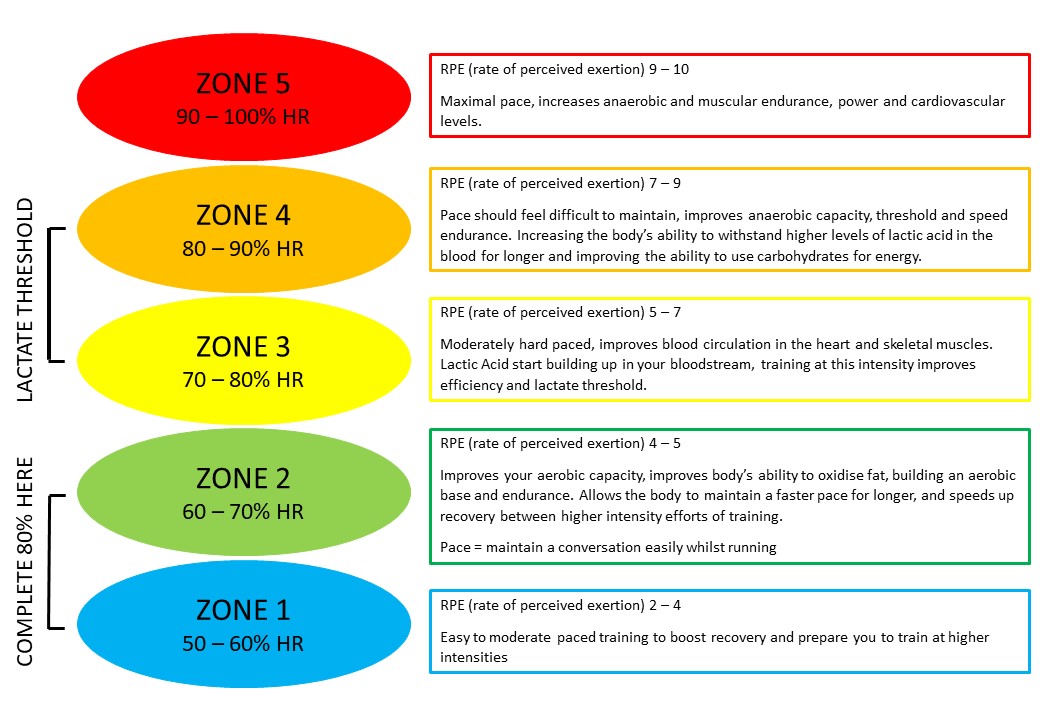Has your running or cycling improvement hit a plateu?
Izzie explains what the 80:20 Training Rule is, and how it can improve your performance.
The 80/20 Rule has become increasingly popular of late, particularly within triathlon where the physical demands of training for the 3 disciplines of swim/bike/run place a huge demand on the body. Reflected mostly in running, following the 80/20 rule allows athletes’ to log higher mileage with less likelihood of injury, therefore increasing their aerobic capacity and endurance, becoming more efficient athletes able to work at higher pace whilst placing less stress on the body.
Research suggests the recreational runner is said to naturally gravitate towards 50% higher intensity, 50% lower intensity, with many recreational runners feel they should be going hard every time they run, therefore completing most of their training in higher zones.
This may see improvements initially but often then leads to a plateau in performance, due to being too fatigued to do higher-intensity sessions and less recovery time.
Higher intensity work causes large amounts of stress on the body. If more than 20% of training is done at this threshold or zone 4 effort, it places the body under too much stress without adequate recovery therefore increasing the injury risk and fatigue.
The correct balance of intensities during training is particularly important during half and full marathon training, triathlons and other long distance endurance events. Following the 80/20 rule and completing most of your training in Zone 2 allows you to build up your aerobic capacity and endurance, safely increasing your mileage whilst minimising the injury risk. This leaves the body fitter with better ability to recover allowing the harder, faster sessions to be completed at higher intensities.
Many recreational runners feel they should be going hard every time they run
In summary…
- Spending 80% of your training time at lower intensity and 20% at higher intensity.
- This method is shown to work for all levels of training, from elite to the more novice runner.
- Planning your workouts to fit the 80/20 rule means avoid scheduling workout of the same type close together, e.g. 2 high intensity days in a row.
- The most significant benefit from following the 80/20 rule is reduced risk of injury.




